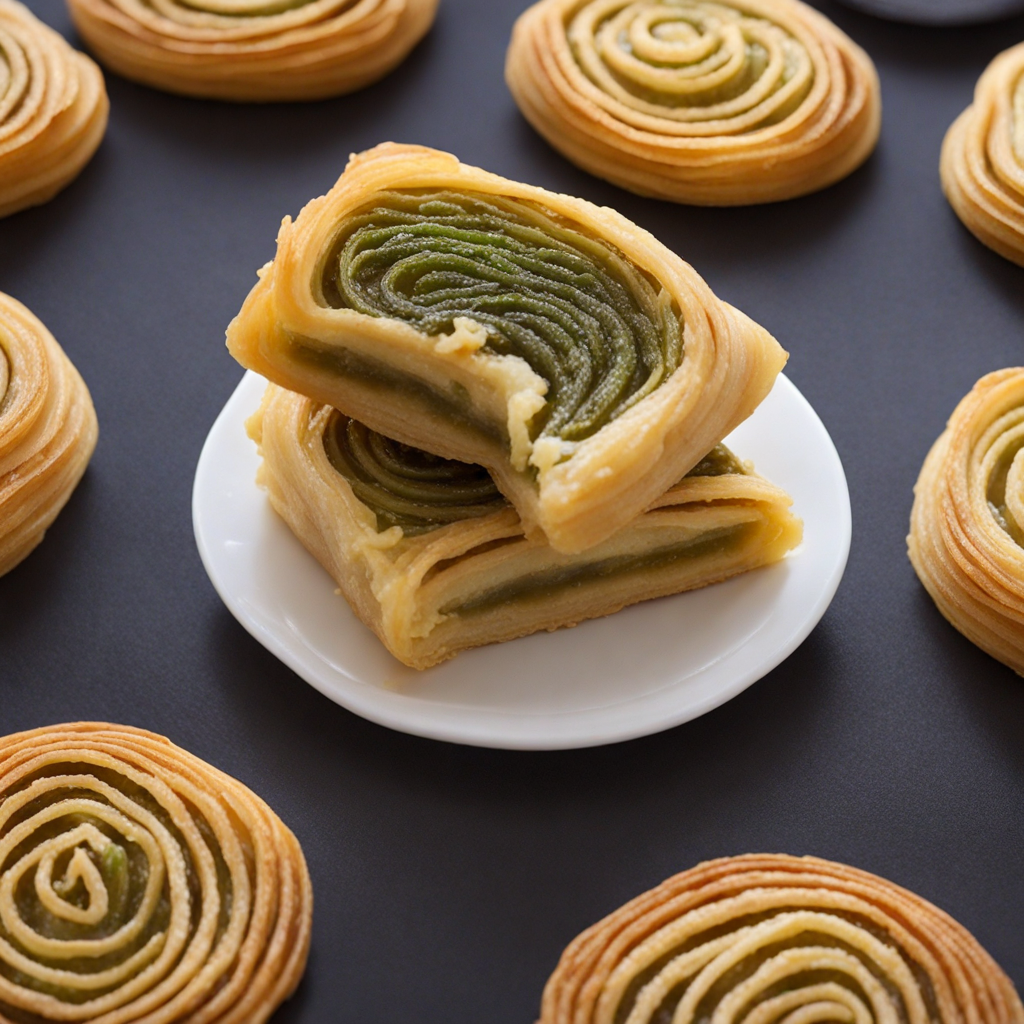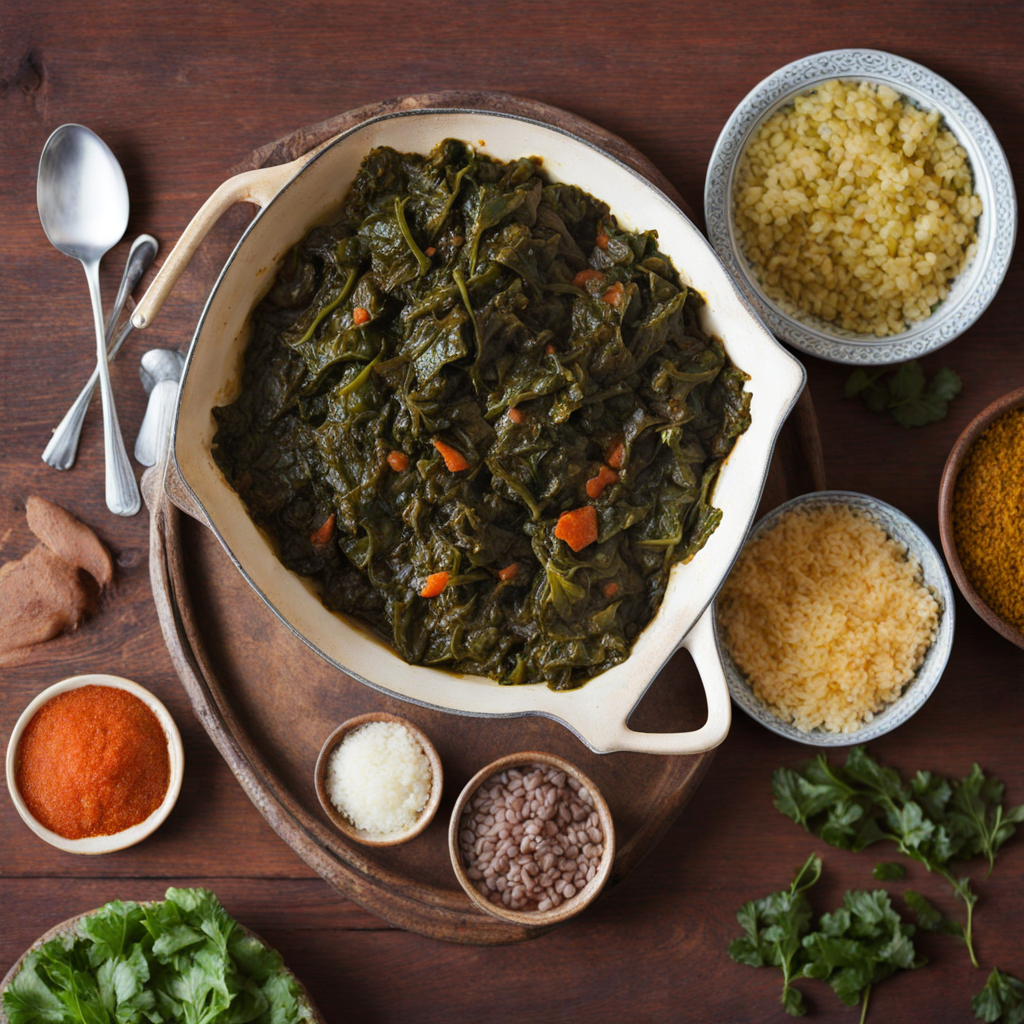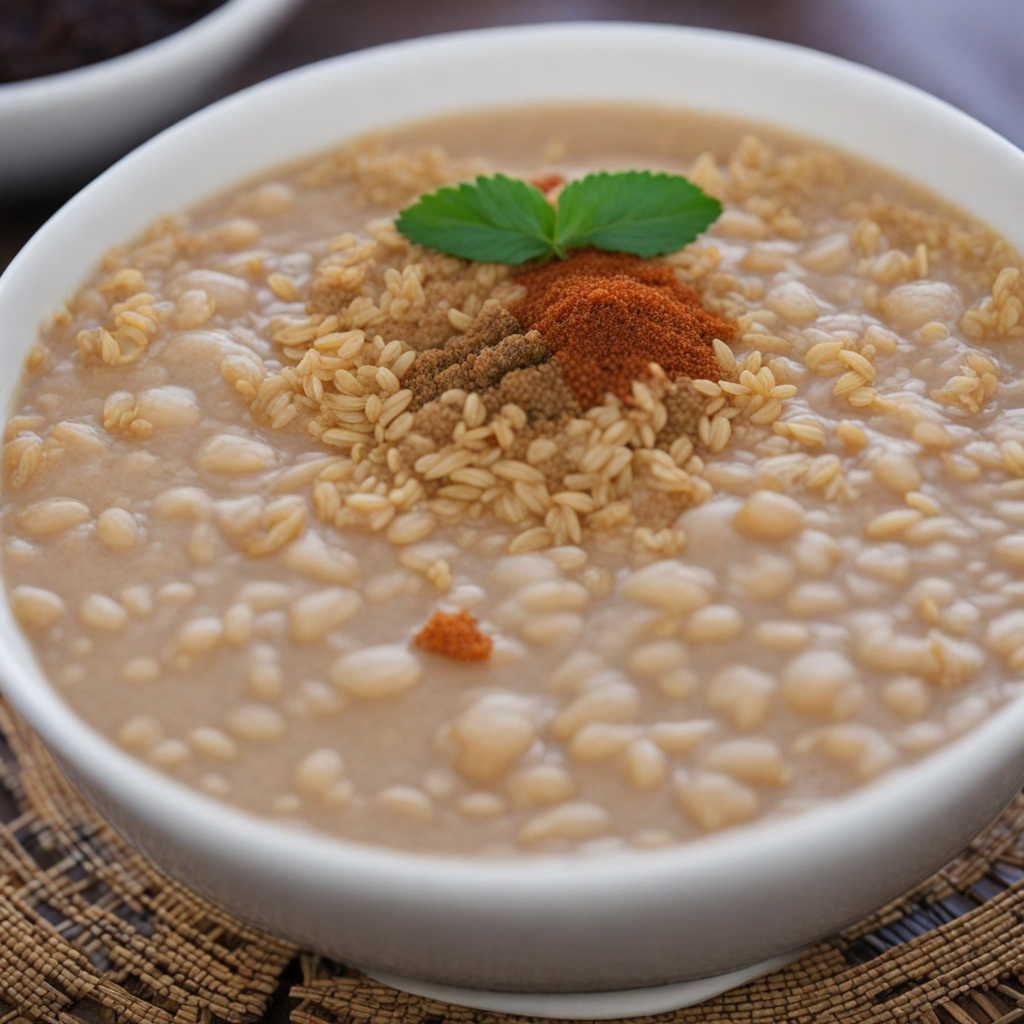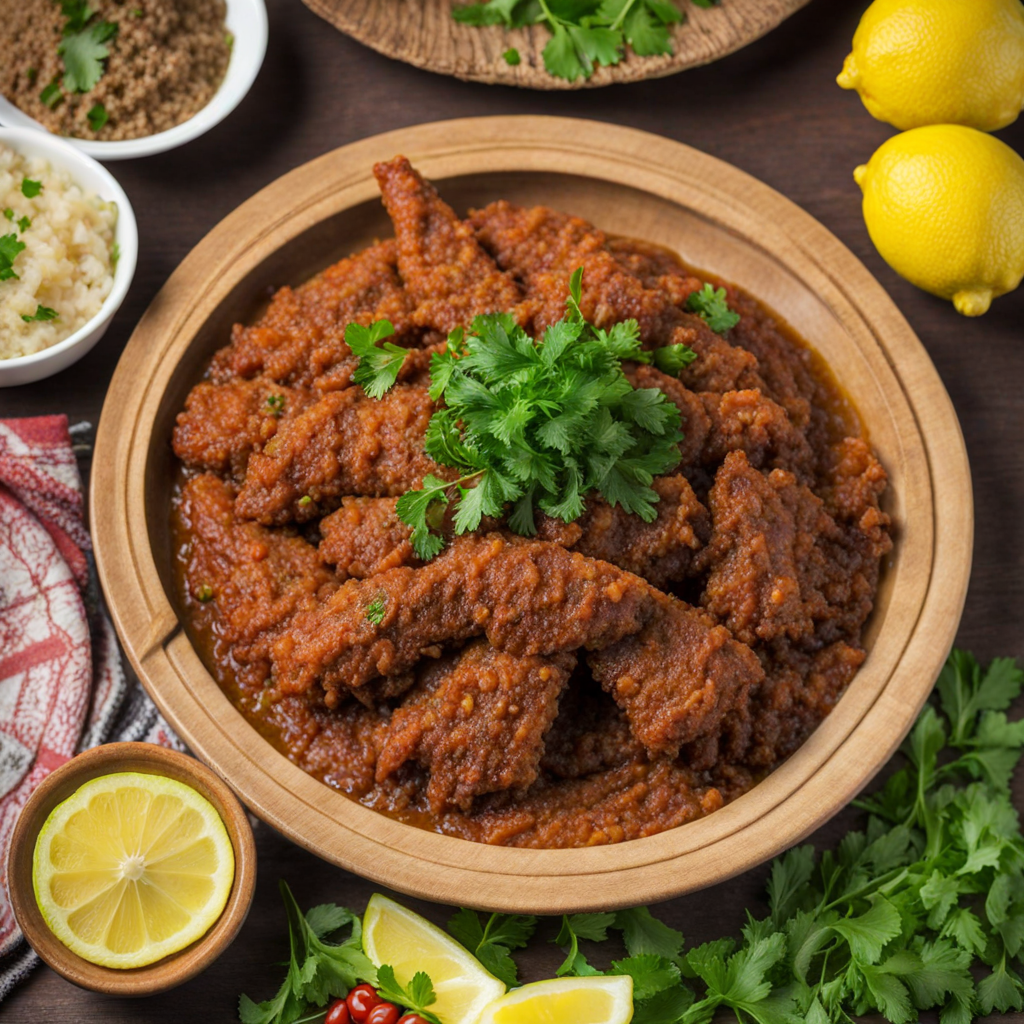Fatira
Fatira is a delightful Ethiopian dish that beautifully blends the rich culinary traditions of the region with a unique texture and flavor profile. At its core, Fatira consists of thin, layered flatbreads that are pan-fried to a crisp, golden finish. The dough is typically made with a combination of flour and water, resulting in a delicate, slightly chewy texture that contrasts wonderfully with its crispy exterior. Traditionally served with a variety of accompaniments, Fatira captures the essence of communal dining in Ethiopia, as it is often shared among family and friends. The dish is versatile and can be enjoyed in numerous ways, whether sweet or savory. For a sweet rendition, it may be drizzled with honey or syrup and sprinkled with powdered sugar, creating a delectable treat perfect for breakfast or dessert. On the savory side, Fatira can be served with spicy lentils, sautéed vegetables, or even a rich, flavorful stew, allowing the diner to experience a harmonious blend of flavors. Each bite offers a satisfying crunch followed by a soft, warm interior that invites you to savor the moment. Fatira not only showcases the simplicity of Ethiopian ingredients but also emphasizes the artistry involved in its preparation. The process of rolling and layering the dough requires skill and patience, reflecting the deep-rooted traditions of Ethiopian cooking. As you partake in this dish, you will find that Fatira is more than just food; it is a celebration of culture, community, and the sharing of culinary experiences, making it a must-try for anyone eager to explore the diverse flavors of Ethiopia.
How It Became This Dish
The Fascinating History of ፋጤራ (Fattira) in Ethiopian Cuisine #### Origin and Etymology Fattira, known as ፋጤራ in Amharic, is an iconic dish in Ethiopian cuisine, characterized by its unique combination of flavors and textures. The term "fattira" is believed to derive from Arabic influences, reflecting the historical interactions between Ethiopia and its neighboring regions, particularly during the medieval period when trade routes flourished across the Red Sea and the Arabian Peninsula. Historically, fattira has its roots deeply embedded in the cultural practices of the Ethiopian Highlands, where various grains like teff, barley, and wheat were cultivated. The dish is a type of flatbread or pancake, often prepared using a simple batter made from flour and water, cooked on a hot surface until it achieves a slightly crispy exterior while remaining soft and pliable on the inside. This cooking method is reminiscent of other traditional flatbreads in the region, such as injera, though fattira is distinct in its preparation and serving style. #### Cultural Significance Fattira holds a special place in Ethiopian culture, often enjoyed during communal meals and special occasions. It is not only a staple food but also a symbol of hospitality and togetherness. Traditionally, it is served with a variety of accompaniments, including stews (known as wot), vegetables, or even honey and butter for a sweet variation, making it a versatile dish enjoyed at breakfast, lunch, and dinner. The preparation of fattira often involves family participation, particularly during festive seasons or gatherings, reinforcing social bonds and cultural ties. In many Ethiopian households, cooking is a communal activity, and the process of making fattira becomes a shared experience that is passed down through generations. This aspect of food preparation highlights the importance of cultural continuity and the role of traditional foods in fostering a sense of identity. #### Development Over Time Over the centuries, the preparation and consumption of fattira have evolved, influenced by various socio-political changes, migrations, and globalization. While the basic recipe remains simple, the ingredients and methods have diversified. In urban areas, for instance, the use of modern appliances has made the preparation quicker and easier, leading to variations that cater to contemporary tastes. Fattira’s popularity surged particularly during the 20th century, as urbanization and the spread of Ethiopian diaspora communities brought the dish into international culinary scenes. Restaurants specializing in Ethiopian cuisine began to introduce fattira to a broader audience, often showcasing it alongside other traditional dishes like injera and doro wot (spicy chicken stew). Through these establishments, the rich flavors and communal aspects of Ethiopian dining have garnered appreciation worldwide. In addition to its traditional forms, chefs and home cooks have begun to experiment with fattira, incorporating ingredients such as herbs, spices, and even different types of flour, leading to a fusion of flavors that appeal to modern palates. This adaptability has further solidified its place in both traditional and contemporary Ethiopian cuisine. #### Nutritional Aspects Fattira, like many Ethiopian dishes, is not just a culinary delight but also a nourishing option. Made primarily from whole grains, it is rich in fiber and essential nutrients. The use of various flours can enhance its nutritional profile; for example, teff flour is known for its high iron content and amino acids, making it a healthful choice. In rural areas, where access to a variety of ingredients may be limited, fattira serves as an essential source of energy, often complementing a diet that may not include a wide range of foods. The dish's versatility also allows it to be paired with protein-rich stews, adding to the overall nutritional value of meals. #### Modern-Day Relevance In today's globalized world, the significance of fattira extends beyond its nutritional value and cultural roots. It represents a continuity of tradition in an ever-changing landscape. As Ethiopians and Ethiopian cuisine gain visibility on the world stage, dishes like fattira are being embraced by diverse audiences, fostering cross-cultural exchanges. Food festivals, cooking classes, and cultural events often feature fattira, allowing participants to engage with Ethiopian culture through its culinary practices. This not only helps preserve the traditional methods of preparation but also educates people about the rich history and cultural significance of Ethiopian food. Furthermore, in the context of the COVID-19 pandemic, there has been a renewed interest in home cooking and traditional recipes, leading many to seek comfort in familiar foods. Fattira, with its simple ingredients and comforting nature, has found its way back into homes as families reconnect over shared meals, emphasizing the role of food in creating bonds during trying times. #### Conclusion The history of fattira is a testament to the resilience and adaptability of Ethiopian culinary traditions. From its humble origins as a staple flatbread to its modern iterations enjoyed around the world, fattira embodies the essence of Ethiopian culture—community, hospitality, and a deep connection to the land. As it continues to evolve and be celebrated, fattira remains a delicious reminder of the rich culinary heritage that has nourished generations and will surely continue to do so for years to come. Through every bite, one can taste the history, the culture, and the love embedded within this remarkable dish.
You may like
Discover local flavors from Ethiopia







